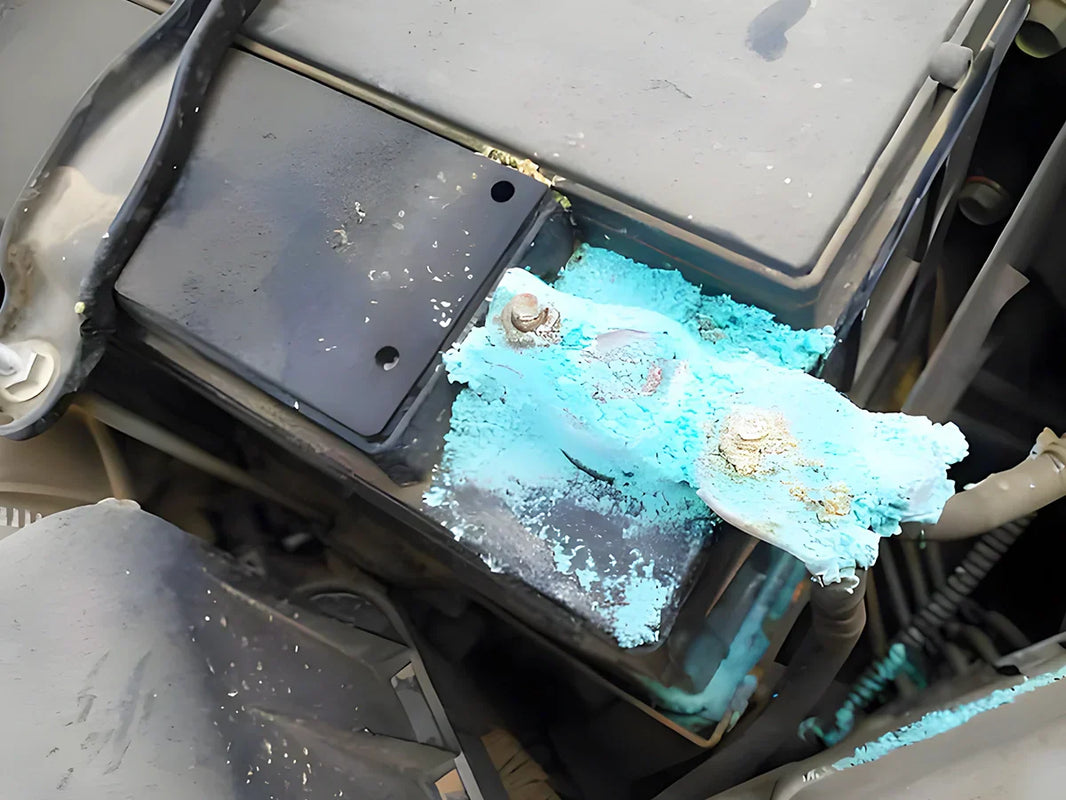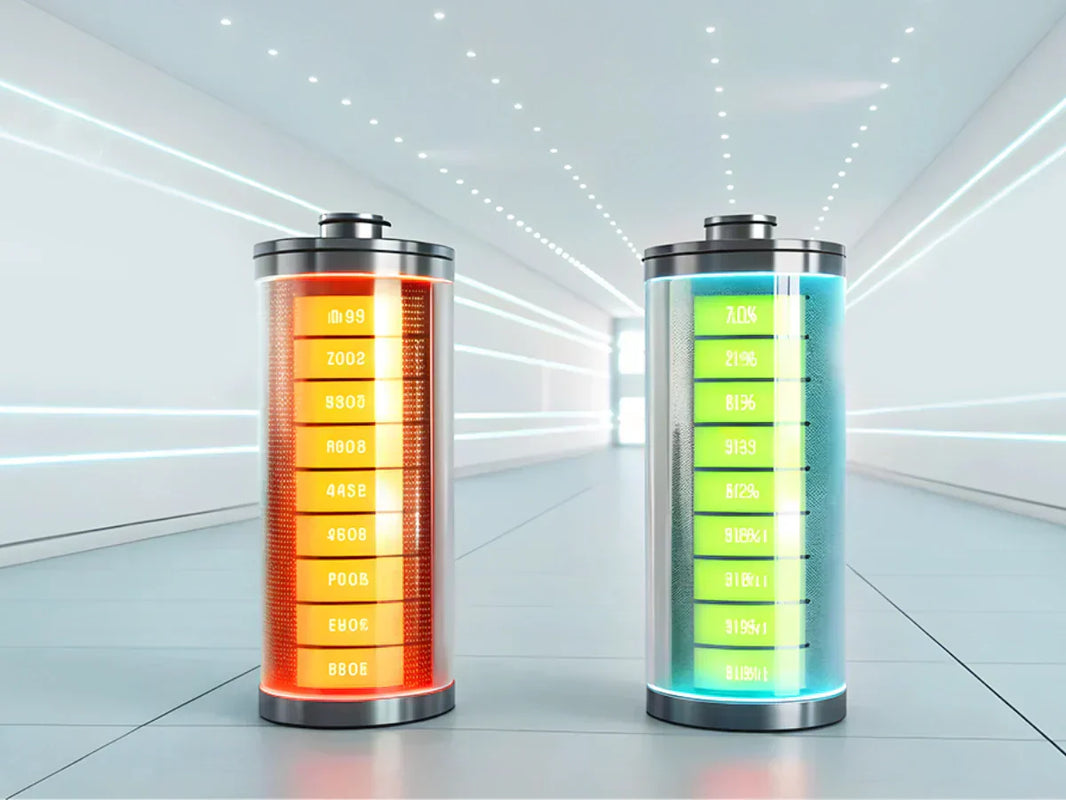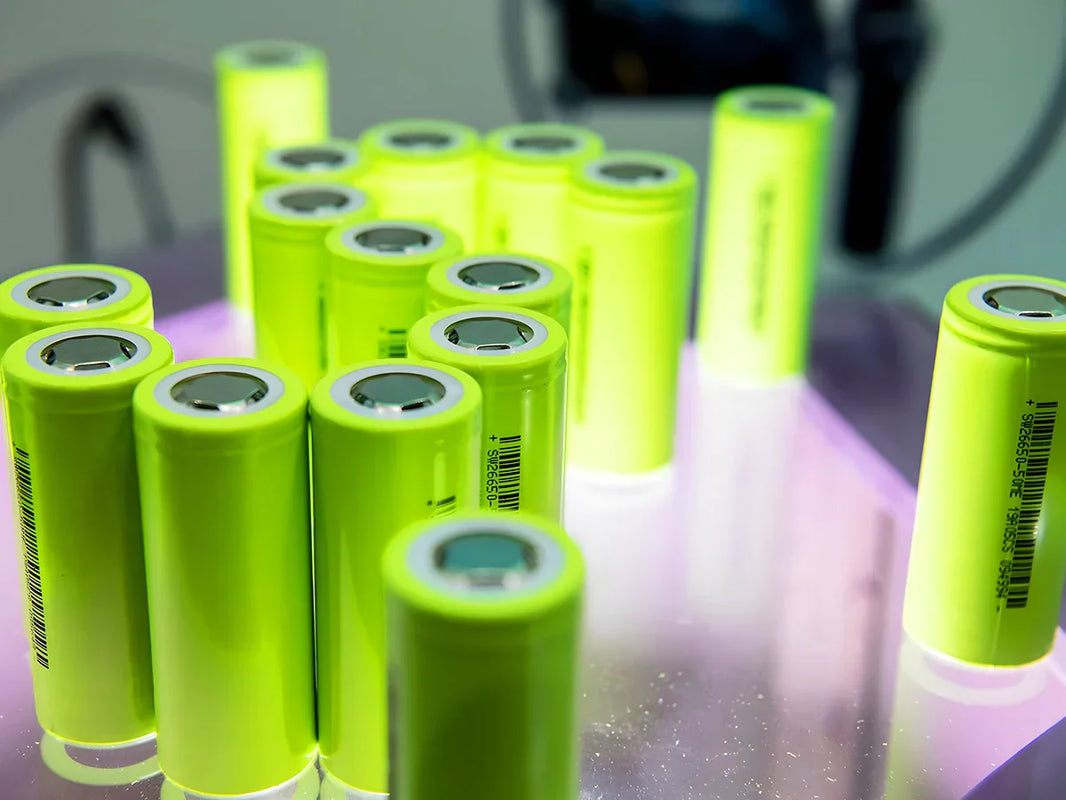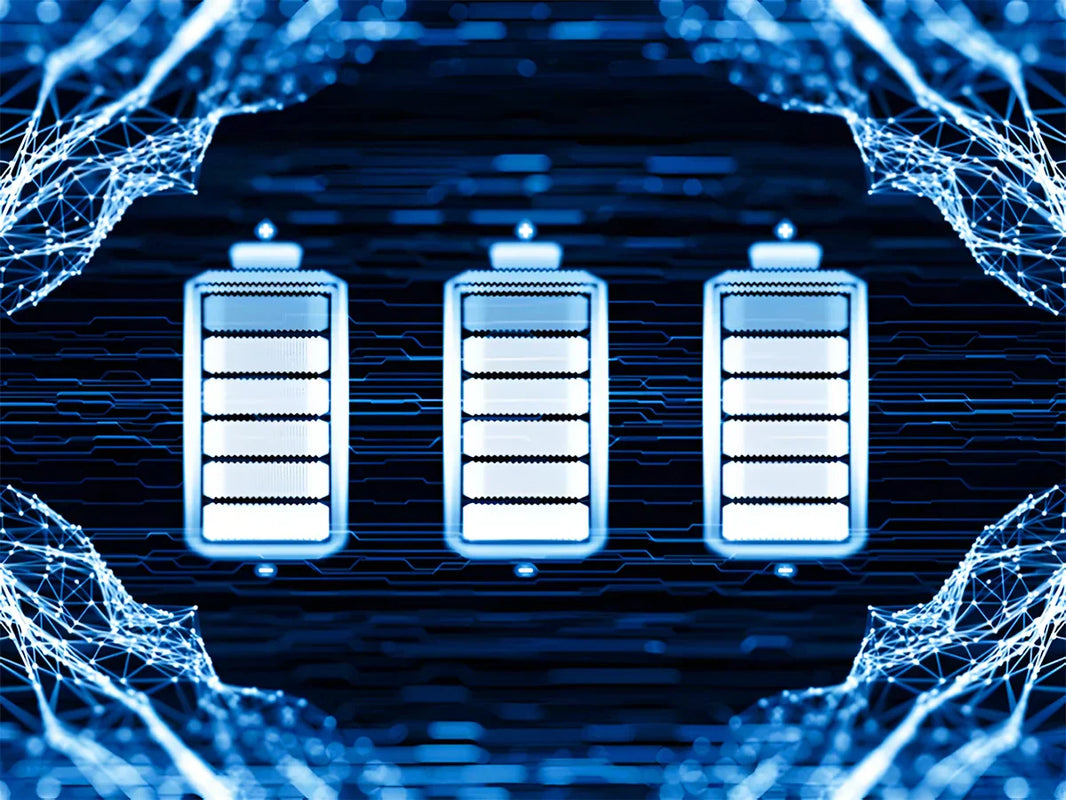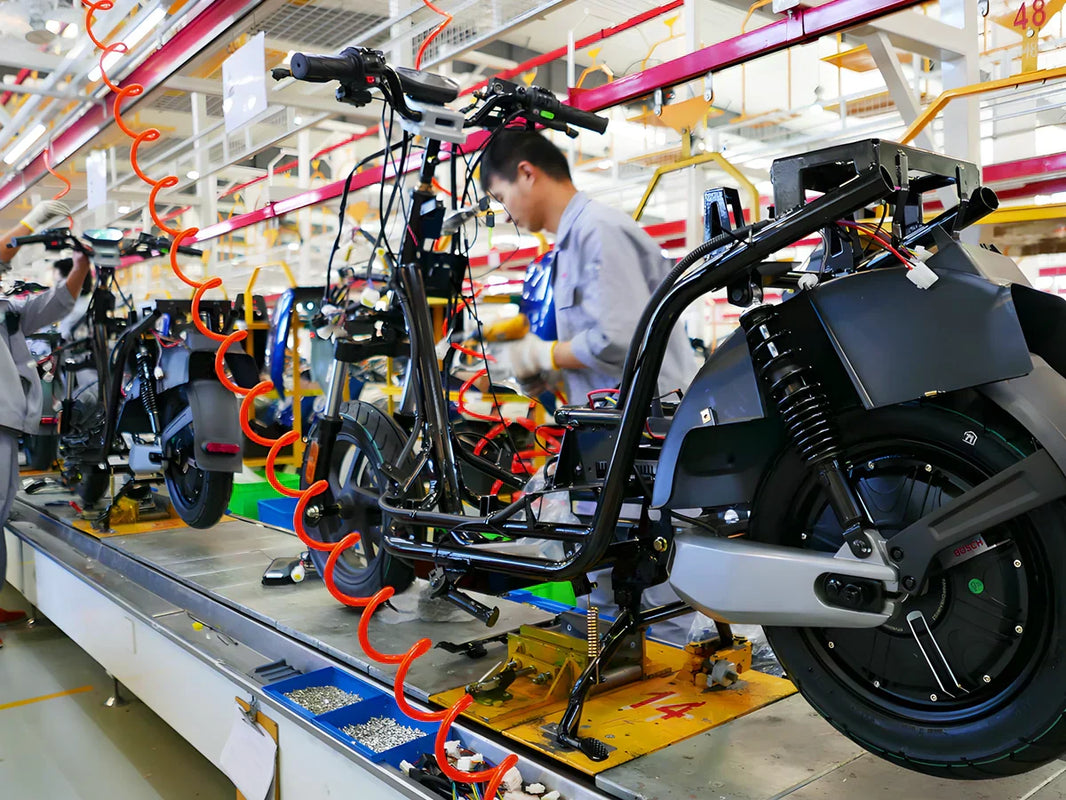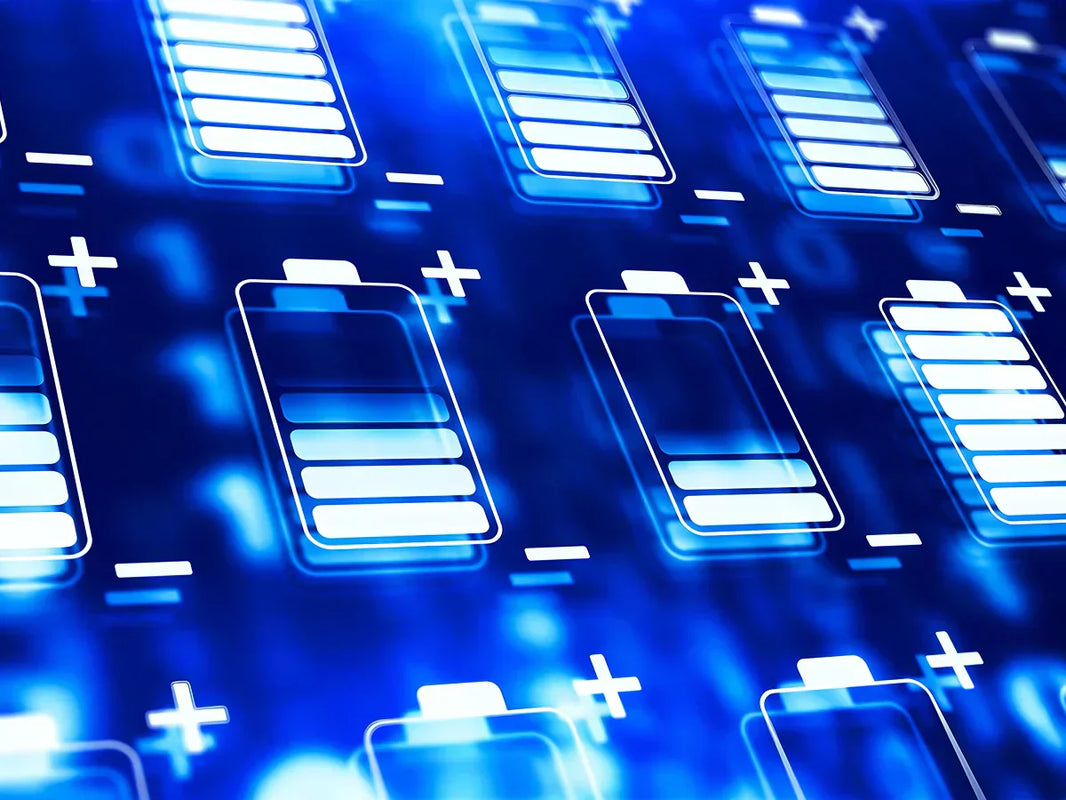
The electric drive system of electric vehicle mainly includes electric motor, electronic controller, mechanical transmission device, power converter and electric motor control system, etc. Its main function is to realize the fast and effective conversion between kinetic energy and electric energy. That is, when the car is running, the electrical energy stored in the battery pack is converted into kinetic energy required to drive the vehicle; when decelerating and braking, the kinetic energy of the vehicle is converted into electrical energy and stored in the battery.
1. Electric motorThe electric motor can not only provide the required power for the normal driving of the electric vehicle, but also can recover the energy to charge the power battery when the electric vehicle is braking or going downhill. When selecting an electric motor, two factors, the load and the driving characteristics of the electric vehicle, should be considered. When the electric vehicle is running at a high speed, the power of the electric motor should remain unchanged for a certain value, and when the electric vehicle is running at a low speed, the torque of the electric motor should also remain unchanged at a certain value.
The main function of the electric motor in an electric vehicle is to convert electrical energy into kinetic energy to provide power for the vehicle, and at the same time, it can convert the kinetic energy of the vehicle during deceleration and braking into electrical energy, which is stored in the power battery pack. The electric motor is the most important power element in the electric vehicle, and its normal, effective and stable operation is of great significance. Therefore, the selection of electric motors is very important for the performance of electric vehicles. In the daily driving process of electric vehicles, they will encounter various uncertain working conditions, such as rapid start or braking, emergency acceleration or deceleration, etc. from time to time. Different torques and rotational speeds are usually required in these operating conditions, as well as rapid energy recovery. In order for the performance of electric vehicles to meet the requirements, the following three points must be satisfied as a motor that is often used.
(1) In order to make the electric vehicle have the ability of instantaneous acceleration and continuous climbing, it is required that the motor must have a certain overload capacity under any circumstances. The electric motor should meet the driving and power requirements of electric vehicles under various complex working conditions as much as possible, and have a relatively wide speed adjustment range.
(2) In order to reduce the energy consumption of the electric vehicle itself, it is necessary to improve the reliability of the motor layout and the convenience of installation, and the motor should have a higher specific power. At the same time, this also makes energy recovery more efficient and faster.
(3) Since the working environment of the motor is variable and sometimes bad, the motor must be able to resist external interference and ensure the reliability of its work. In addition, the motor should also meet the requirements of simple operation, low manufacturing and use costs, and suitable for large-scale mass production.

At present, the motors that are widely used in electric vehicles mainly include the following.
(1) DC motor. Among various types of motors, DC motors are the first to be used, so their manufacturing technology is relatively mature, and has the advantages of simple operation and control, and relatively low manufacturing costs. The disadvantage is that the mass is large, the efficiency is low, and the installation is inconvenient. The advantages of DC motors are shown in the convenience of use and large adjustable speed range, but these advantages are not enough to support the use of DC motors in electric vehicles with high speed, multiple operating conditions and high energy utilization requirements. Therefore, DC motors are now only used in some miniature and short-distance electric vehicles.
(2) AC induction motor. Compared with the DC motor, the biggest advantage of the AC induction motor is that the volume and mass are relatively small, the operation is stable, and the service life is relatively long. However, its control system is not as complicated as a DC motor, and its research and development costs are relatively high. With the continuous development of electronic and electronic control technology, the gap between the two will become smaller and smaller, and the market share of the application scale of AC induction motors will be further increased.
(3) Permanent magnet motor. Permanent magnet motors are divided into two types: DC type and AC type. The DC type is called a brushless motor and the AC type is called a synchronous motor. But both are composed of permanent magnet materials to form a magnetic field, which is controlled by an electric current. Its main characteristics are that the torque is large, and there is basically no inrush current when the vehicle speed changes suddenly, and the current change is also very weak when the load changes. Since the control of the permanent magnet motor is completed according to the change of the current, the control method and process are relatively complicated. Therefore, the precision of the control system is required to be high, and the research and development cost is relatively large, so the price is relatively expensive. However, with the continuous upgrading of the control system, its research and development costs will gradually decrease, and large-scale production will be realized.
(4) Switched reluctance motor. The switched reluctance motor has the advantages of high reliability, large torque when starting to work, simple and easy to operate, and high efficiency. However, due to the many difficulties in the complex design of its controller and its system, and the high manufacturing cost, it is rarely used in electric vehicles currently produced, and it is necessary to wait for its control technology to become more mature before mass production.

The electronic controller is the control center of the entire electric vehicle system. Its main function is to realize the coordination of the control of the electric vehicle by monitoring the converter in real time according to the electrical signals continuously issued by the outside world (pedal). When multiple external information is input at the same time (that is, the acceleration and braking signals are received at the same time), the braking signal will be given priority to ensure the safety of the electric vehicle.
3. Mechanical transmissionThe main function of the mechanical transmission device is basically the same as that of the traditional internal combustion engine vehicle, which is the transmission device of the driving torque, but the driving torque of the electric vehicle is provided by the electric motor. Due to the good speed regulation performance of the electric motor, its speed change device can be simplified to a great extent, and only a reducer with a fixed speed ratio can be used to meet the power requirements of the electric vehicle.
4. Power converterThe power converter is also known as the inverter. Its main function is to control the rotation speed, rotation direction and torque of the motor in real time through feedback signals or related commands of the motor, current and controller, so as to realize the effective conversion of electric vehicle energy.
5. Motor control systemThe selection of the motor control system should follow the principle of simple and effective structure. While satisfying the performance, the motor should be able to run well and stably, and must have high efficiency. In addition, its effects must be fully considered when formulating control strategies.



